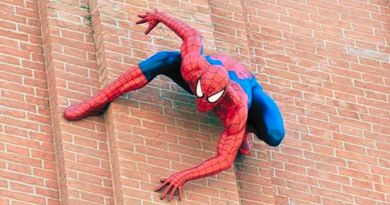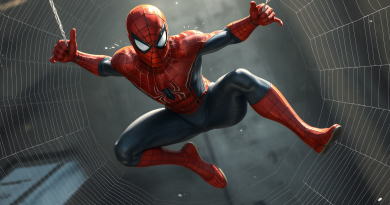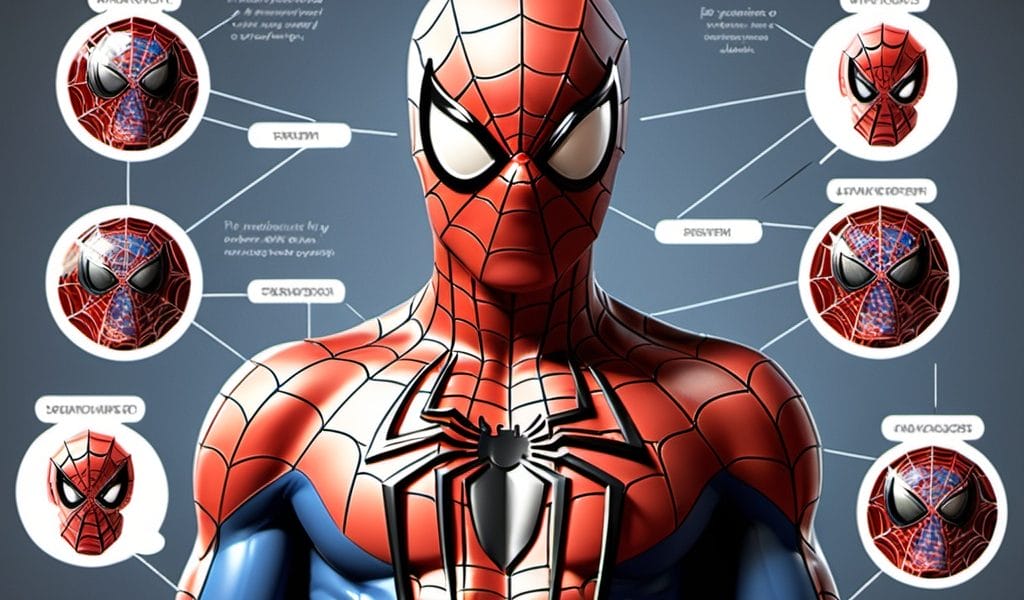Physics of Spiderman Part 1
Spider-Man’s powers, while fictional, can be explored through physics concepts to understand how they might work in a scientific context. Below, I discuss some key aspects of Spider-Man’s abilities:
1. Wall-Crawling Ability
In the comics and movies, Spider-Man can stick to walls like a spider. To understand this, we can look at how real spiders and geckos adhere to surfaces. They use van der Waals forces—a type of weak intermolecular force that results from temporary attractions between molecules. Geckos, for instance, have tiny hair-like structures called setae that create a massive surface area to generate enough adhesion.
For Spider-Man, a plausible explanation could be that his hands and feet have a similar kind of microscopic structure that can bond with surfaces using van der Waals forces. These structures would provide enough friction for Spider-Man to stick to and climb walls, provided they have adequate surface contact.
2. Super Strength
Spider-Man possesses strength beyond that of a regular human, often depicted as strong enough to lift a car or stop a speeding train. This superhuman strength is due to an increase in muscle efficiency, density, or enhanced muscle fibers, which might function like a spider’s muscles scaled up.
In physics terms, Spider-Man’s muscles would need to generate more force per unit area compared to normal human muscles. Spiders have specialized muscles that give them impressive relative strength; their smaller size allows them to lift objects many times their body weight due to the square-cube law, which affects the scaling of strength versus mass. Spider-Man’s muscles would presumably be adapted in a similar way to generate an enormous amount of force.
3. Spider Sense
Spider-Man’s “spider-sense” gives him an almost precognitive awareness of danger. This power is challenging to explain with conventional physics, but a potential analogy might be to biological phenomena like heightened sensory perception or the use of electromagnetic fields. For instance, animals like pigeons and sharks can detect small electromagnetic or electric fields, which helps them navigate or sense prey.
For Spider-Man, his nervous system might be enhanced in a way that allows it to process environmental signals very rapidly, almost at an unconscious level, giving the impression of sensing danger before it actually happens. Essentially, this would require an ultra-fast neural response time to external stimuli.
4. Web-Shooting
The web-shooters Spider-Man uses are synthetic devices (in most versions) that produce a web-like substance. From a physics standpoint, a real material that could match the strength, elasticity, and adhesive properties of Spider-Man’s webs might be similar to spider silk. Spider silk is known to be stronger than steel (per unit weight) and highly elastic. The tensile strength of such a material would allow Spider-Man to swing from buildings without breaking the web or snapping due to the forces involved.
The physics behind swinging involves pendulum motion, where the tension in the web and Spider-Man’s velocity determine the path and speed. The force Spider-Man experiences would include gravitational force and centripetal force as he moves through his arc. The elasticity of the webbing would help absorb the stress of swinging and the abrupt changes in direction, distributing forces to keep him from tearing the web or harming himself.
5. Super Agility and Reflexes
Spider-Man’s agility and reflexes are enhanced to levels far beyond human capability, allowing him to dodge bullets or swing quickly through tight urban environments. In physics terms, this means that Spider-Man has an extremely high reaction time and a greater degree of flexibility and control over his body.
The agility requires efficient conversion of energy between kinetic and potential forms, rapid acceleration, and precise control over balance and momentum. His ability to leap and twist his body through different arcs would mean his muscles and nervous system are highly adapted to make quick adjustments to maintain balance and trajectory. This implies excellent proprioception—the ability to sense the position of one’s own body parts—and significant muscular power and endurance to execute complex acrobatic maneuvers repeatedly.
Physics Challenges
While Spider-Man’s powers are presented as being achievable through spider DNA or radiation, in reality, there are significant physical limitations that would challenge these abilities:
- Square-Cube Law: Scaling up the abilities of a spider to human size encounters issues related to the square-cube law. Strength scales with the cross-sectional area (squared), while mass scales with volume (cubed), meaning a larger organism would require disproportionately more strength to maintain similar capabilities.
- Energy Requirements: The metabolic energy needed for superhuman feats of strength, agility, and rapid reflexes would be enormous, requiring a constant source of high energy. Spider-Man would need to consume much more food than a normal human to sustain these activities.
Overall, Spider-Man’s abilities blend biology with speculative physics, rooted in some real-world principles but ultimately requiring significant imaginative leaps beyond known science.

Physics of Spiderman Part 2
Wall crawling Van der Waals forces are weak intermolecular forces that occur between molecules or atoms. These forces play a

Physics of Spiderman Part 3
Strength of Spider Silk – Webbing Spider-Man’s webbing, as depicted in comics and movies, is portrayed to be incredibly strong—often
Author
-

I'm a freelancer writer for Heroic Clash. I've also written for CBR, MovieSource, and Inquistr
View all posts

